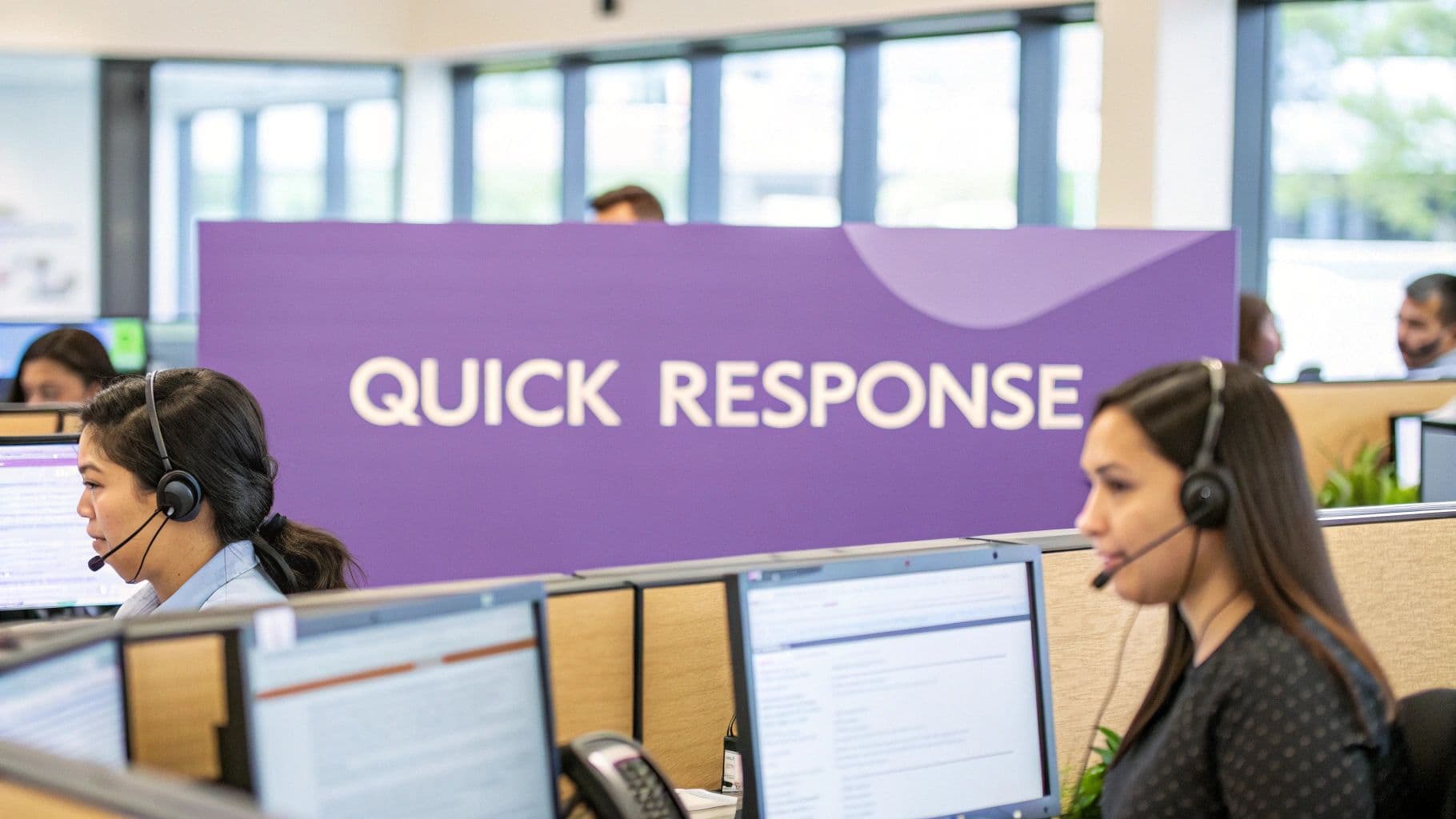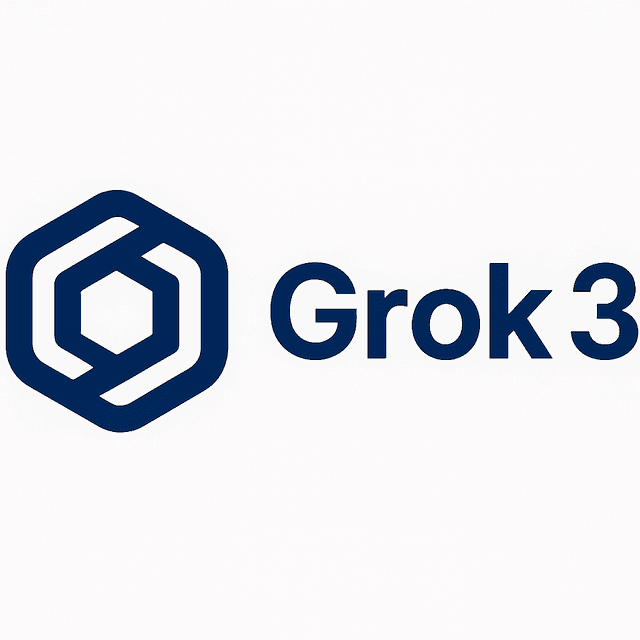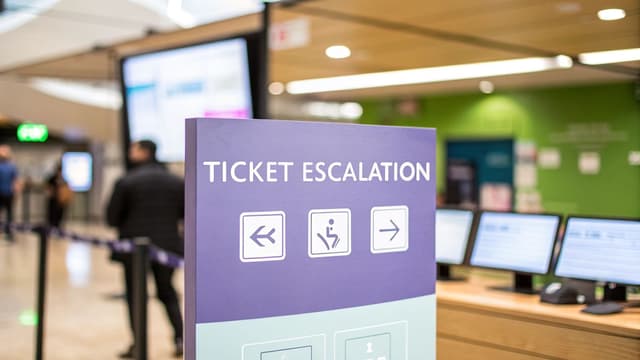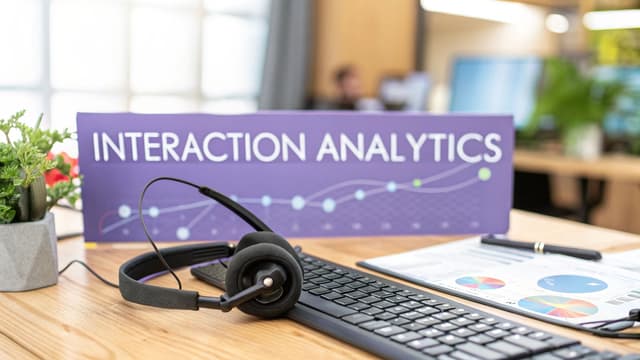The Hidden Cost of Slow Response Times

In today's fast-moving world, customers value quick service. They expect prompt responses, especially when it comes to customer support. Slow response times can negatively impact your business's bottom line. Beyond the initial frustration, delays can create a ripple effect, impacting customer loyalty and brand reputation. Providing timely customer service is essential for business success. Implementing workflow automation for small business solutions can help streamline support processes and prevent delays.
One key area affected by slow response times is customer retention. Long waits often lead to customer churn, as frustrated customers may seek out competitors who prioritize responsiveness. Imagine a potential customer abandoning an online shopping cart because they couldn't get a quick answer to a pre-sales question. This lost sale directly reflects the cost of slow response times. This negative experience can also prevent future purchases, further increasing the financial impact. Improving customer service response times is key to boosting customer satisfaction and loyalty.
According to recent statistics, the average email response time for customer service is around 12 hours. This delay can frustrate customers, as almost 60% consider long holds and wait times the most frustrating aspect of a service experience. For more in-depth statistics on customer experience, check out this resource: Learn more about customer experience statistics.
The Impact on Customer Lifetime Value
The cost of slow responses extends beyond individual lost sales. It also impacts customer lifetime value (CLTV), a crucial metric representing the total revenue expected from a single customer. Valued and supported customers tend to make repeat purchases and become brand advocates. However, slow responses can damage this relationship, leading to fewer purchases and a lower CLTV.
The Domino Effect of Negative Word-of-Mouth
Slow response times can create a domino effect of negative consequences. Unhappy customers often share their negative experiences, both online and offline. This negative word-of-mouth can severely damage your brand's reputation and discourage potential customers. In the age of social media, one negative review can quickly spread, magnifying the impact of a slow response.
Understanding the Shifting Landscape of Customer Expectations
Today's consumers are used to instant communication and on-demand services. This has changed their customer service expectations. They expect businesses to be available and responsive across various channels, like email, chat, and social media platforms like Facebook and Twitter. Businesses that don't adapt to these changing expectations risk losing customers to competitors who prioritize quick and efficient communication.
Diagnosing Your Response Time Bottlenecks
Slow customer service response times can have a significant impact on your business. Before you can fix the problem, you need to understand where the delays are happening. This requires a careful examination of your current customer service standard operating procedures, much like a doctor diagnosing a patient before prescribing medicine. This process helps to identify specific bottlenecks that slow down your team’s responsiveness without assigning blame.
Mapping the Customer Journey
Begin by mapping out the typical customer journey. This means outlining each point of contact a customer has with your support team, from the initial contact to the final resolution. Look for points of friction along the way. For example, are customers getting lost trying to navigate your website's FAQ section? Are they being transferred between departments repeatedly? These friction points are potential bottlenecks that contribute to slower response times. One key area to examine is how to improve cart abandonment solutions. This article addresses the fundamental reasons why customers abandon their purchases, which directly relates to the cost of slow response times.
Analyzing Ticket Routing and Knowledge Accessibility
Next, take a look at your ticket routing process. Do you have a clear and efficient system for assigning tickets to the right support agents? Inefficient routing can cause significant delays. Also, assess how accessible your knowledge base is. Can your agents quickly find the information they need to address customer issues? A disorganized or incomplete knowledge base makes agents waste valuable time searching for answers, which in turn increases response times.
Gathering Agent Feedback and Leveraging Data Analytics
Your frontline agents often have valuable insights into the challenges they face daily. Regular surveys and feedback sessions can provide valuable perspectives. This information can uncover hidden bottlenecks that might be overlooked by data analysis alone. Finally, utilize customer interaction analytics to measure the impact of each bottleneck. Track metrics like first response time, average handling time, and resolution time. This data provides concrete evidence of where improvements are most needed and allows you to prioritize your efforts. This targeted approach lets you focus on making the most impactful changes first, maximizing your return on investment. By understanding the root causes of slow response times, you can develop specific solutions that will truly make a difference.
Leveraging AI To Transform Response Speed

Fast customer service isn't a nice-to-have anymore; it's essential. Artificial Intelligence (AI) provides the tools to make significant improvements in response times. AI is already making a real difference in customer service, helping businesses meet and even exceed customer expectations.
How AI Is Revolutionizing Customer Interactions
AI is changing how businesses interact with customers, especially through automation. AI-powered chatbots can handle many routine tasks like order updates and FAQs. This frees up human agents to handle more complex issues.
AI can also analyze customer sentiment in real time using sentiment analysis. Support teams can then prioritize urgent requests and ensure customers needing immediate help get it quickly. Automatic routing, another AI-powered tool, directs inquiries to the best-suited agent based on language, product knowledge, or issue type. This minimizes transfers and gets customers to the right person the first time.
The Growing Importance of AI In Customer Service
AI in customer service is rapidly becoming the norm. The market was valued at $308 million in 2022 and is projected to reach $3 billion by 2032. This impressive growth highlights AI's potential to make customer service more efficient.
About 79% of customer service professionals now consider AI and automation vital to their strategies. This shows a growing understanding of how AI can improve customer service operations. For more statistics, check out this resource: Find more detailed statistics here.
Let's take a closer look at the measurable impact AI can have:
AI Implementation Impact on Customer Service Metrics
| Metric | Average Improvement | Implementation Timeline | ROI Range |
|---|---|---|---|
| Response Time | 20-30% | 3-6 months | 150-200% |
| Resolution Rate | 10-15% | 6-12 months | 100-175% |
| Customer Satisfaction | 5-10% | 12-18 months | 75-125% |
This table highlights the potential benefits of incorporating AI, from quicker response times to happier customers and a strong return on investment. The timeline for seeing results varies depending on the metric, but overall, AI offers a compelling way to enhance customer service.
Choosing The Right AI Solution For Your Business
Many different AI solutions are available, each with its own advantages and disadvantages. FlowGent AI, for example, makes it easy for businesses to use AI-powered agents across different channels. These intelligent agents can handle basic questions, gather information, and seamlessly escalate complex issues to human agents.
Maximizing AI Effectiveness While Maintaining The Human Touch
While AI is a powerful tool, it's important to find the right balance between automation and human interaction. Customers still value personalized support, especially for complicated issues. Successful AI implementation involves creating smooth transitions between automated systems and human agents.
This means giving agents all the information from previous AI interactions and ensuring a seamless handoff for the customer. It's also important to monitor metrics beyond response time, like customer satisfaction and resolution rates, to ensure high-quality service. This balanced approach lets businesses use AI's full potential while providing empathetic, human-centered support.
Crafting a Multi-Channel Response Strategy That Works
Today's customers value quick and consistent support, no matter how they reach out. This means businesses need a well-defined strategy to meet these rising expectations. Understanding customer preferences across various channels like phone, email, live chat, and social media is crucial for tailoring an effective response strategy. It's not about simply growing your team; it's about working smarter with the resources you have.
Setting Channel-Specific Response Benchmarks
Top-performing support teams understand that a one-size-fits-all approach doesn't work. They know that customer expectations vary based on the communication channel. For instance, a customer using live chat expects a near-immediate response, while a response to an email within a few hours is usually acceptable. Businesses should establish Service Level Agreements (SLAs) for each channel based on industry standards, customer feedback, and their own business goals.
To illustrate the connection between response times, SLAs, and customer satisfaction, take a look at the infographic below:
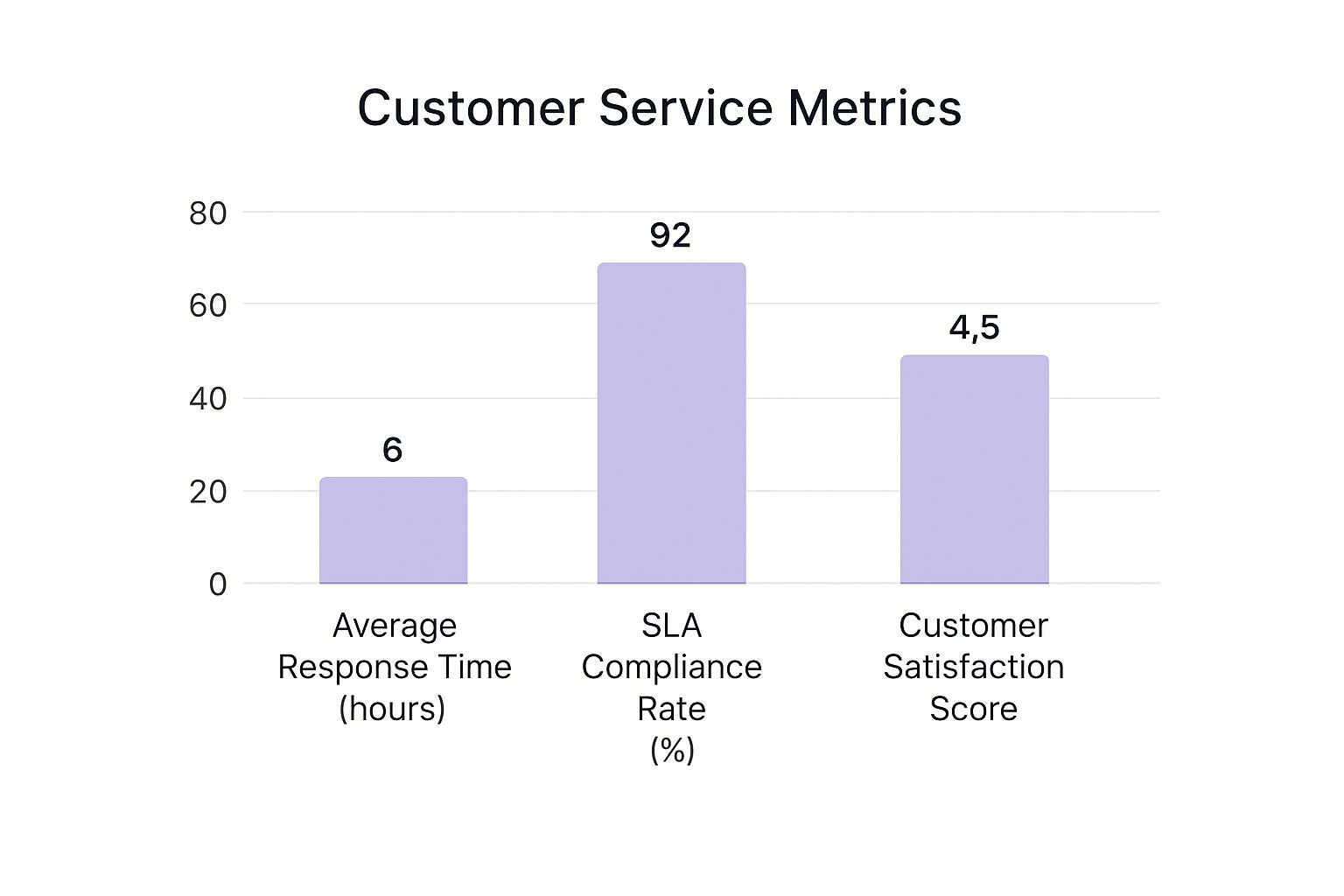
As the infographic shows, improved response times and high SLA compliance contribute directly to higher customer satisfaction scores. This underscores the need for a fast and dependable support system. Well-defined benchmarks give your team clear targets and show customers your dedication to excellent service. Using AI can also be a powerful way to fully or partially automate support tasks. You can learn more about how to automate customer support.
Unifying Customer Context and Building Integrated Workflows
Customers often switch between communication channels during a single support interaction. This makes having a unified view of the customer essential. Every agent should have access to the customer's complete interaction history, regardless of the channel used. This prevents customers from having to repeat their issue, saving everyone time and reducing frustration.
Well-integrated workflows are equally important. Support tickets should move smoothly between channels and departments, without getting lost. This often involves integrating your CRM, helpdesk software, and communication platforms. For instance, a chatbot that can't resolve a complex issue should be able to seamlessly escalate it to a human agent, providing all the necessary context.
To understand industry standards and set appropriate targets, consider the following benchmarks:
To better understand how to structure your response time goals, the table below offers a comparison of industry averages, customer expectations, and recommended targets for various communication channels:
Response Time Benchmarks by Communication Channel Comparison of industry standard response times across different customer service channels with recommendations for optimal performance targets
| Communication Channel | Industry Average | Customer Expectation | Recommended Target |
|---|---|---|---|
| Phone | 3 minutes | Immediate | Under 1 minute |
| 24 hours | Within a few hours | Under 12 hours | |
| Live Chat | 1 minute | Immediate | Under 30 seconds |
| Social Media | 1 hour | Within a few hours | Under 30 minutes |
This table provides a helpful framework for setting SLAs. While industry averages offer a baseline, aiming for the recommended targets can significantly improve customer satisfaction.
Smart Resource Allocation
Optimizing response times depends heavily on matching staffing levels to customer demand. Analyzing historical data and predicting busy periods allow you to allocate resources efficiently. This might involve scheduling more agents during peak times or using AI to forecast call volume and adjust staffing proactively. This proactive approach ensures you have enough agents available to handle incoming requests promptly. This flexible staffing strategy helps businesses improve response times without unnecessary costs. By optimizing your team and resources, you can meet customer demands and provide fast, efficient support.
Building Self-Service That Customers Actually Use
Effective self-service isn't about simply creating a knowledge base and hoping customers will use it. It requires a thoughtful approach to design an experience so intuitive and helpful that customers prefer it to contacting support directly. This means understanding your customer's needs and empowering them with the right tools and information.
Identifying Opportunities for Self-Resolution
Not all customer issues are suitable for self-service. The key is to pinpoint common, simple problems that customers can easily resolve themselves. Think about tasks like password resets, order tracking, or accessing basic product information. These are prime examples of issues that can be effectively addressed through well-designed self-service resources.
By diverting these simpler inquiries to self-service, you free up your support agents to handle more complex issues. These might include technical problems or situations requiring personalized assistance. Knowing which issues to route to self-service and which require human intervention is crucial for improving customer service response times.
Creating Intuitive Navigation and User-Friendly Content
Imagine your self-service portal as a well-organized library. If customers can't find what they need quickly, they'll likely give up and contact support. This defeats the purpose of self-service and adds to your support team's workload.
Focus on clear, concise content that directly answers customer questions. Use descriptive titles, headings, and keywords to ensure information is easily discoverable through search. A comprehensive FAQ section is a good starting point. Consider incorporating other formats like video tutorials or step-by-step guides to cater to different learning preferences.
Promoting Self-Service Without Making Customers Feel Abandoned
While promoting self-service is essential, it's important to do so without making customers feel neglected. Integrate self-service links naturally within your existing support channels. For example, if a customer emails you with a common question, provide a concise answer along with a link to a relevant article in your knowledge base.
FlowGent AI can personalize these recommendations. This ensures customers are directed to the most pertinent resources based on their specific situation. By promoting self-service proactively and integrating it seamlessly into your existing workflows, you can boost customer satisfaction while reducing support costs.
Measuring the Success of Your Self-Service Strategy
Evaluating the success of your self-service strategy involves more than just tracking deflection rates (the percentage of customers who avoid contacting support). While this metric is valuable, it doesn't provide a complete picture.
Gather data on customer satisfaction with your self-service resources using surveys and feedback forms. Analyze search terms used within your knowledge base to uncover gaps in your content or identify areas for improvement. By consistently monitoring these metrics, you can continually refine your self-service offerings to better meet customer needs and ensure its long-term effectiveness.
Balancing Speed and Quality: Training For Both

Speed is essential in customer service. For more in-depth advice on team leadership, see our customer service manager tips. However, it shouldn't sacrifice quality. A fast, unhelpful response can be more frustrating than a delayed, helpful one. This section explores how top support teams train their agents to deliver both speed and substance, following best practices for customer service, ultimately improving customer service response time.
Empowering Frontline Agents
A key strategy for improving customer service response time is empowering frontline agents with decision-making authority. This reduces escalations, which can slow down support. Imagine a customer needing a refund. If the agent needs manager approval, the response time increases. But, if they can process it directly, the customer gets a faster resolution.
Building Effective Knowledge Systems
Giving agents easy access to information is also vital. A well-structured knowledge base puts answers at their fingertips, allowing them to address queries quickly and accurately. For example, access to product manuals, FAQs, and troubleshooting guides empowers agents to resolve common issues without extensive research. This translates into faster response times and happier customers.
Utilizing Communication Templates and Coaching
Well-crafted communication templates help agents provide empathetic and efficient responses, even under pressure. These templates ensure consistency and professionalism while saving valuable time. A template for acknowledging a problem, for example, can be quickly personalized, offering a quick, yet personal touch.
Effective coaching also plays a vital role. Regular coaching sessions help agents differentiate between issues requiring immediate, concise answers and those needing more in-depth attention. This discerning approach optimizes response time while ensuring customers receive the right level of support.
Measuring Velocity and Quality: A Balanced Approach
Finally, establishing frameworks for measuring both speed and quality is essential. Tracking metrics like first response time and resolution time monitors efficiency. Simultaneously, measuring customer satisfaction (CSAT) scores provides insights into the quality of interactions.
FlowGent AI can assist in measuring these metrics, providing data that helps support teams identify areas for improvement. This ensures enhancements in one area don’t negatively impact the other. For instance, improved response time coupled with decreased CSAT scores suggests agents are prioritizing speed over quality. Using platforms like FlowGent AI helps maintain this crucial balance.
The Business Case for Response Time Investment
Improving customer service response time isn't just about happy customers; it's a strategic investment with a significant impact on your bottom line. Building a compelling business case that resonates with executives across departments is key to securing resources for this vital aspect of your business.
Quantifying the ROI of Faster Responses
Calculating the true ROI of improved response times means quantifying both immediate and long-term benefits. Immediate benefits include increased operational efficiency. Faster responses can reduce follow-up interactions, freeing up agents to handle more inquiries, translating directly into cost savings. Additionally, faster responses can lead to a conversion uplift. Customers with pre-sales questions are more likely to purchase if they receive a prompt answer.
Long-term value comes from improvements in customer retention and competitive differentiation. Prioritizing quick and efficient service builds customer loyalty and positions your brand as one that values customer time. This results in increased customer lifetime value and positive word-of-mouth referrals.
This long-term perspective is crucial for demonstrating the lasting impact of response time improvements. A significant number of customers are willing to switch companies due to poor service, even if they are satisfied with the product. In fact, 64% of customers would switch to a competitor for this reason. Furthermore, 85% of customers are willing to choose a company with superior service. Explore this topic further.
Addressing Common Objections and Benchmarking Against Competitors
When presenting your business case, anticipate and address common objections. Some executives might view improved response time as a cost center, not a revenue driver. Counter this by showcasing data linking faster responses to increased sales and customer retention.
Benchmarking against competitors also strengthens your argument. Research your competitors’ response times and highlight how improvements can give you a competitive edge. Demonstrating that your competitors prioritize responsiveness underscores the importance of investing in your own team.
Setting Realistic Targets and Tracking Financial Outcomes
Establish clear, measurable improvement targets. Don't promise unrealistic improvements overnight. Instead, set achievable goals and track your progress meticulously. Regularly report on key metrics like first response time, average handling time, and customer satisfaction scores.
By demonstrating how faster responses directly impact revenue streams, you solidify the business case for continued investment in customer service. This data-driven approach shows your commitment to continuous improvement and builds trust with stakeholders.
Implementing Your Response Time Improvement Strategy
Ready to transform your customer service and experience the benefits of faster response times? FlowGent AI empowers businesses to deliver exceptional support across multiple channels with intelligent AI agents. The platform integrates seamlessly with your existing tools, automating routine tasks and freeing up your team to focus on complex issues. Learn more about FlowGent AI and discover how it can help you improve customer satisfaction, reduce costs, and drive revenue growth. For more on measuring your CS strategy's success, explore our Key Performance Indicators for Customer Service.
